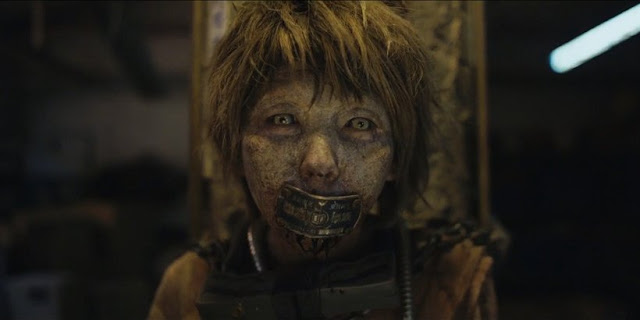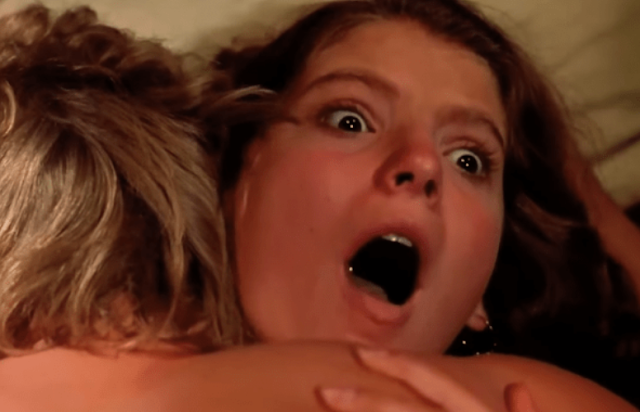Rise of the sympathetic monster
Indie horror flicks like Mon Mon Mon Monsters, Ravenous and Wildling are moving away from the idea that monsters are straightforwardly evil.
Note: This essay contains minor spoilers for Wildling.
Jason Voorhees. Leatherface. Sadako. Though they have tragic backstories, they each function as an unstoppable evil force in their respective movies.
The traditional horror icons don't have a sense of interiority. It would be out of the question to feel anything like pity for our favourite slasher killers or supernatural villains.
Yet Chinese horror film Mon Mon Mon Monsters (currently streaming on Shudder) features a flesh-hungry monster with razor sharp teeth and claws as its most sympathetic character.
The purest relationship in the film is between this little monster and her equally monstrous older sister. In a touching early scene, the older monster offers her sister the tastiest morsel from the corpse of an innocent man they've just killed.
The plot of Mon Mon Mon Monsters follows a group of psychopathic schoolchildren who abduct the smaller monster and brutally torture her. The older monster is hellbent on revenge, and we find ourselves gleefully anticipating the moment when she tracks down the teenage sadists and satisfyingly tears them limb from limb.
The idea that it's the humans that are the real monsters is familiar to fans of the zombie subgenre. From 28 Days Later to The Walking Dead, zombies often serve to bring out the worst in the survivors.
Violence is in a monster's nature, but the films counterplay this with the more sadistic violence of the human characters.
Yet the zombies themselves rarely have an inner life. We've met ex-zombies (The Cured, In The Flesh) and half-human second generation zombies (The Girl With All The Gifts), but the real deal has always served as a natural catastrophe, pure hunger, an obstacle the protagonists must overcome.
2017 Canadian film Ravenous (now streaming on Netflix) changed all this – albeit subtly. The zombies in this film erect bizarre towers of furniture, indicating some kind of culture or civilisation. The zombies don't just cry out of hunger and aggression, but also pain.
When asked to explain what made his zombies different, writer-director Robin Aubert told The Verge: "I just have a point of view about the humanity of those zombies. And I think that’s the difference between my zombies, and those of another guy. My zombies are a reflection of what I think of humanity."
And it's not just zombies. Although humans bitten by werewolves are often portrayed as innocent victims (An American Werewolf in London, The Wolf Man), when they transform the only thing on their mind is to kill, kill, kill. 2018's Wildling remiagines the werewolf as more of a wild animal, with no compulsion to kill for killing's sake.
On the surface, the movie looks like a rerun of Ginger Snaps. The teenage protagonist Anna is rescued from a life imprisoned in the woods by her sinister adoptive father. Airdropped into the real world, she has to deal with developing animalistic and sexual feelings, along with a gradual werewolf transformation.
Anna's anxious dreams show that she's expecting to turn into the kind of lyncanthrope familiar to fans of The Howling and Dog Soldiers. Yet what we actually get is more like a Neanderthal, a subspecies of human rather than a viscious animal.
We've seen friendly werewolves before (Teen Wolf, Twilight, Canadian TV show Bitten), but usually with the slightly naff premise that though the lycanthrope's body transforms, their mind and personality remain unchanged.
The Wildling is more interesting because Anna does become more ruthless and primal, more prone to lash out. But while the humans in the film seem to hunt Anna just because she's different, Anna only harms others to protect herself.
The shift seems to be from bloodless attempts to turn horror's rogues gallery of monsters into heroes to trying to understand them on their own terms.
That's what make these films feel like a new treatment of the sympathetic monster. We feel sympathy for the creatures of Mon Mon Mon Monsters and the zombies of Ravenous, but we know that they'd happily rip our throats out if given the opportunity. Violence is in their nature, but the films counterplay this with the more sadistic violence of the human characters.
The shift seems to be from bloodless attempts to turn horror's rogues gallery of monsters into heroes to trying to understand them on their own terms. They're not human, but this doesn't make them evil. In fact, quite the opposite.
Even when the creatures from Mon Mon Mon Monsters have massacred most of the protagonists' year group, they still have the moral high ground. They kill out of love and revenge, the schoolchildren just kill for kicks.
Though Ravenous enters new ground in its portrayal of the walking dead, it's still stuffed with many of the old zombie movie tropes. Here's our handy round-up of what to expect from the subgenre.
Follow @GoreConnoisseur







Comments
Post a Comment